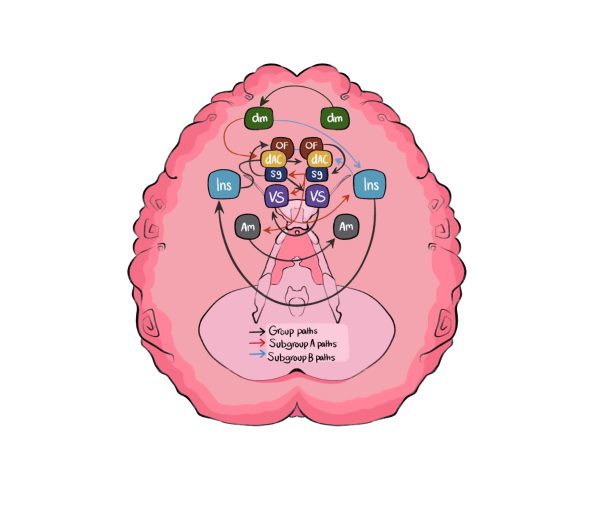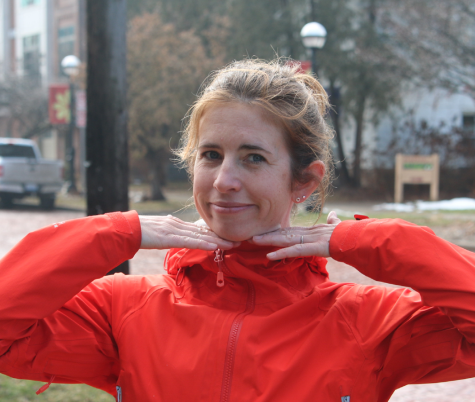Discussing OCD with Specialist Amy Plavnick
What is OCD?
OCD stands for obsessive compulsive disorder, and basically it’s split into two parts. The obsessive part is unwanted intrusive thoughts or images that come into somebody’s head that cause distress. That is then followed by compulsions or anything that someone does to try to get rid of distress. For instance, compulsions can be things that you can see, but people can also have mental compulsions. So someone has an intrusive thought, let’s say it’s about germs like, “I just touched this thing and now I worry I have bad germs”. They now feel really anxious and that feeling of distress is so uncomfortable so then they do something to make the feeling go away, like washing their hands. But the hard part about that is they’ve just taught their brain that that feeling of anxiety or distress is not okay. Then the next time they touch something that may call that feeling they want to wash their hands again, which then feeds that loop, making them wash their hands over and over again. Other compulsions can be thoughts, so maybe someone has an intrusive thought like, what if I hurt my mom in some way, right? And it causes lots of anxiety. Then they say a mental prayer over and over again, excessively. That’s what they do in their head every single time until that feeling goes away.
Is OCD something that occurs in one’s brain or is it other parts of the body?
It’s definitely considered a neurological thing. When we look at PET scans, we can actually see a difference between people with OCD and without OCD. They have different brain activity. What’s interesting though, is after a successful treatment, the brain activity is then similar to those of a non-OCD brain. There have also been studies about OCD having a biological genetic component to it. It’s thought of as a combination of nature and nurture. I am not saying that anybody did anything to cause OCD, like someone’s parents, it is more based on how they were born. It’s not uncommon to look across a family tree and find that, let’s say, your grandma wasn’t officially diagnosed, but she had these tendencies or these symptoms of what probably were OCD. Not always but a lot of times that’s the case.
In a severe case of OCD, what does that look like?
What happens when we diagnose OCD as a disorder is we look at a couple of different things: the frequency of the thoughts, the level of distress that someone has and how much interference is it causing. Sometimes I treat more mild OCD, and that’s when someone is still going to school, they’re still able to have friends and they’re still able to do most of what they do in a day, but maybe they stay in the bathroom a little longer because OCD gets in the way. But for people with very severe OCD, it can completely take over their lives. I have people that have spent six to eight hours a day in the shower because they can’t get themselves out. As soon as they walk out of the shower, they feel like they’re contaminated again and then they have to get back in the shower. That’s what really severe OCD can look like, so much of their day gets taken over by compulsions because they’re constantly trying to keep that anxiety at bay. Really what OCD is searching for is certainty. But the problem is that someone with OCD is never going to be satisfied unless they’re 100% sure. For example, a more common worry is being clean, so they’re never going to be satisfied unless they’re 100% sure that they’re 100% clean. But when do you think was the last time you were sure that you were 100% clean? Right, so their OCD tells them if you just try a little harder than you will be clean. But that kind of clear signal never comes.
Are there different types of OCD?
There are lots of different types, but probably the two most common ones that you hear about or that you see in movies or TV shows are the cleaning and then the straightening. And, you know, this isn’t just like someone who likes a tidy space, this is someone who might take an hour to make sure the book is lined up completely symmetrically on their desk or there are people who get stuck on erasing and erasing until they get the letter just right. People have intrusive thoughts about harm. So like, what if I stabbed myself or tried to kill myself even though I don’t want to? It is very different than suicidal thoughts where somebody is contemplating suicide, these thoughts are unwanted and terrifying. Someone might think like, oh no, what if I just snapped and took that knife and stabbed myself? They may get images of doing that and stop going into the kitchen because they have to protect themselves from the knives or harm. Another example would be like, what if I stabbed my mom? Again, these aren’t homicidal people, these are people who have an excessive amount of worries about those kinds of things. There can be religious thoughts, so for someone who is religious, their OCD might present when they are worried they might have offended God in some way. And so then they’re having to do these prayers a million times. Some may get a thought in their head of like, what if I like the devil better? And then they get really freaked out by that thought and they start doing things to try to get rid of that thought. So you know, I could have 100 people that I’m treating with OCD and, and it could look 100 different ways.
Can OCD be cured fully?
It’s not something that can be considered cured or curable. When we think about it, people are kind of wired with it, and we can help change the wiring a little bit with treatment. The more one practices not living that way, the more it can actually change the wiring of their brain. But it’s kind of like if you’re born with a sticky brain; the thoughts get stuck in the brain and they have a harder time leaving. But you can learn how to respond to those thoughts differently so that they don’t take over your life anymore. For those of us without OCD, it’s almost like the thought comes in the door and it then closes and we’re like, that was weird and we move on. For someone with OCD, it’s like the door is stuck open and then the thought comes in again, and then they’re like, “Why does the thought keep coming in? Maybe it means something? Why am I having the thought of jumping in front of the bus? I don’t think I want to jump on the front of the bus. But what if I do want to, otherwise why would I be having it so often?” This can lead to protective behavior like, they are walking across a crosswalk, but they must always have a person on their left just in case. Now they’ve taught their brain this is a thought I really have to pay attention to. When people get treatment they learn to treat those thoughts as just thoughts that we don’t have to pay so much attention to, making sure they don’t take over. The goal of the treatment is to get them to train their brain to stop doing their rituals.
What would a typical OCD therapy session look like?
The standard treatment for OCD has two pieces: medication and ERP (exposure and response prevention). What ERP does in treatment is that we take action towards the things you’re afraid of with the goal of preventing you from doing the ritual. As an example let’s say that I have OCD surrounding cleanliness, I think that a certain object or surface is contaminated. In session, we would go around and purposefully touch things that are considered contaminated. Say I’ve got germs all over me, I am going to spread them all around and then I’m not gonna wash my hands, right? And then we would recognize those worried thoughts and say, “I don’t need to listen to you.” What we talk a lot about in treatment is being willing to tolerate the discomfort in order to move toward living the life that you want to live. People with OCD don’t enjoy doing their rituals, they actually do those with a lot of distress. They make one feel pretty uncomfortable and unhappy, but they feel like they are obligated to do it. This idea of instead of constantly trying to get rid of that bad feeling or that feeling of anxiety, how can we approach it on purpose in a structured way? The practice of sitting with that feeling of discomfort without trying to make it go away will help them to build their confidence in their ability to handle discomfort.
What does recovery look like for an OCD patient?
The whole goal of treatment is for people to feel more confident in their ability to feel uncomfortable. Through the course of treatment, we’re doing increasingly difficult exposures, which ultimately leads to people feeling more confident in the fact that they don’t have to partake in their rituals. For example, they can tolerate being dirty or they can tolerate having a certain bad thought and not doing something about it. They are then able to move on with my day. When we say that someone has been successful in treatment, it’s when OCD isn’t interfering with their life as much. Our thoughts can be much like the weather; we can want the weather to be sunny when it’s cloudy, but there’s nothing we can do about it. And the reality is we can’t really control what thoughts come into our head, but we can control how much attention we give them. In treatment, we may never get rid of the thoughts, but they decrease in their frequency over time.
How do you help someone with OCD as an outsider?
I think the answer is always educating yourself. There’s this big campaign that the international OCD foundation does every year that talks about how it’s really offensive to people who have OCD when they say things like, “That’s so OCD” or “I’m so OCD right now”. When those statements are thrown around it makes people with OCD really offended because we would never say, “I’m such a cancer patient today”, that’d be really rude. The lack of understanding of what OCD is and how debilitating and painful it is for people who experience it, so being careful of your language is incredibly important. So, I think that is an amazing organization to look into. You know, a big thing for family and friends is to be careful not to accommodate your loved ones OCD. If they’re asking you to follow certain rules so that you don’t bring dirty things into the house, you have to be clear with them and say that you aren’t going to do that. Just telling them something like, “I can see that you’re really struggling with this, but I believe you can handle it”, encourages them to stand up to their OCD as opposed to listening and following their rules. If they are not getting help, you could encourage them to do so as well.Sometimes people just need a little push.










![[Caption]. [] by [Graphic by Sarah Fay] is licensed under [CC BY-NC-].](https://chscommunicator.com/wp-content/uploads/2023/12/mentalhealth_image-600x450.webp)




